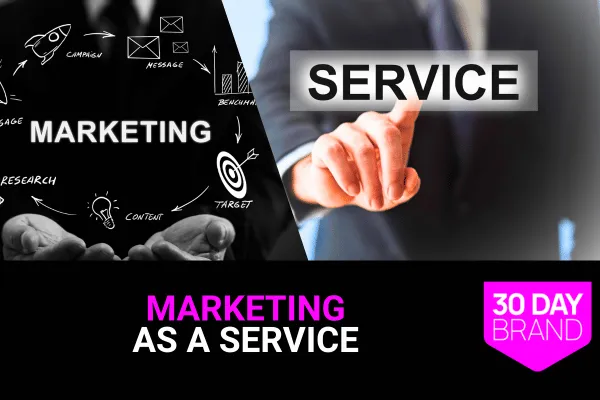
Marketing as a Service (MaaS): The Future of Business Marketing
Growth + ROI Playbook
Intro
If you need flexible marketing without new hires, start here. This guide explains MaaS, compares models, and shows how to implement fast.
What MaaS Means
Marketing as a Service delivers ongoing strategy and execution on a subscription. You get a team, tools, and optimization each month.
External context to ground decisions:
Budgets fell to 7.7% of revenue in 2024. Efficiency matters. (Gartner via WSJ). The Wall Street Journal
Marketers prioritize AI and data unification. (Salesforce State of Marketing). Salesforce
Teams plan to invest more in content and automation. (HubSpot Marketing Statistics). HubSpot
Cross-links: compare turnkey marketing solutions, outsourced marketing services, and done-for-you lead generation.
Core Principles of MaaS
A MaaS partnership should run like an internal team with external efficiency.
Continuous strategy: Quarterly plans adjust to data.
Always-on execution: Campaigns run without gaps.
Shared stack: Tools included and maintained.
Scorecards: Clear KPIs and monthly reviews.
What’s Included
Strategic Services
Market analysis: Trends, competitors, and demand.
Roadmaps: Quarterly goals tied to revenue.
Positioning: Your Business messaging framework stays consistent.
Execution Services
Channels: SEO, PPC, social, and email.
Content: Blogs, video, and sales assets.
Automation: Journeys, scoring, and routing.
Technology + Analytics
Stack access: CRM, automation, and dashboards.
Attribution: Offers mapped to outcomes.
Governance: Consent, roles, and auditing.
When MaaS Beats Traditional Models
Pick MaaS when you need flexibility and speed without headcount risk.
Variable demand: Bold: Scale up or down with seasons.
Skill coverage: Bold: Fill gaps across channels and data.
Faster launch: Bold: Ship in weeks using proven SOPs.
MaaS vs Traditional Agency
MaaS = subscription: Bold: Predictable costs and continuous optimization.
Projects = bursts: Bold: Stop-start work and change orders.
MaaS team: Bold: Named owners and weekly scorecards.
Expected Outcomes
Use conservative targets first, then scale winners.
Lead volume: Bold: Up 50–150% with consistent output.
Conversion: Bold: Up 15–40% with CRO and nurture.
Efficiency: Bold: Lower CAC via shared tools and focus.
Drivers align with budget pressure and AI priorities. (WSJ) (Salesforce) (HubSpot). The Wall Street Journal+2Salesforce+2
Implementation Plan
Step 1: Define goals and guardrails
Set KPIs: Bold: Pipeline, CAC, payback.
Clarify ICP: Bold: Firmographics and pain.
Step 2: Choose scope and tier
Start narrow: Bold: One offer, two channels.
Select tier: Bold: Match capacity to targets.
Step 3: Stand up the stack
Connect: Bold: CRM, automation, analytics.
Instrument: Bold: UTMs and events for attribution.
Step 4: Launch MVP campaigns
Ship: Bold: Search + one social for balance.
Route: Bold: Calendar handoff to sales.
Step 5: Review and scale
Monthly: Bold: Scorecards and kill list.
Quarterly: Bold: Double down on winners.
Cross-link: build pipeline with done-for-you lead generation.
KPIs to Track
Acquisition: Bold: MQLs, SQLs, meetings.
Quality: Bold: SQL rate, ACV, win rate.
Efficiency: Bold: CPL, CAC, payback.
Velocity: Bold: Time to first meeting.
Attribution: Bold: Channel and offer ROI.
Vendor Checklist
Proof: Bold: Case studies in your ICP.
People: Bold: Named leads and backups.
Process: Bold: SOPs and QA gates.
Tech: Bold: Clean integrations and admin access.
Terms: Bold: Exit and data portability.
FAQ
Is MaaS only for big companies?
No. Founder-led B2B firms use focused scopes first.
How fast can MaaS launch?
Many teams launch core programs in 4–8 weeks.
Who owns the data and assets?
You do. Require admin access and exports.
Does MaaS replace my team?
No. It complements your Client acquisition system.
How is this different from Done-for-you marketing?
MaaS is subscription-based with continuous optimization.
Next Step
Prefer in-house control with expert speed? The 30-day brand system installs messaging, funnels, and a Client acquisition system without agency sprawl. First step: Run your free Brand Message Analyzer (https://30daybrand.com/audit).










